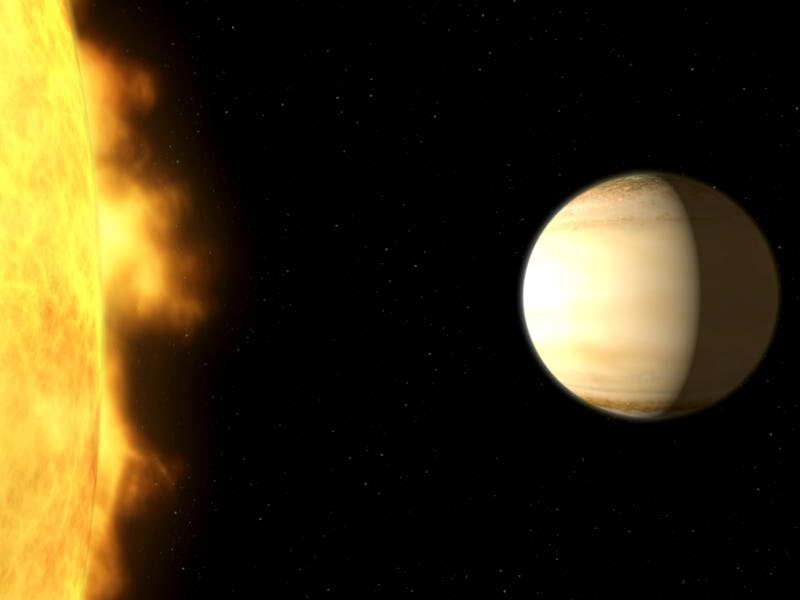According to NASA, Saturn has a seriously thicc relative about 700 light-years away, in the constellation Virgo. Somehow, the fact this is Saturn’s lookalike isn’t even close to the coolest thing about this exoplanet.
Using the space agency’s Hubble and Spitzer space telescopes, scientists analyzed the atmosphere of this strange world, called WASP-39b. Though it’s similar to Saturn in terms of mass, researchers have recently discovered evidence that WASP-39b contains roughly three times as much water as its famous cousin. The researchers’ findings have been published in The Astronomical Journal.
Join our private Dope Space Pics group on Facebook for more strange wonder.
Artist's rendition of WASP-39b
By observing the starlight that penetrates through the planet’s atmosphere, researchers found WASP-39b’s atmosphere traps a lot of water vapor. They posit the planet was formed farther away from its star and wallopped by icy objects along the way.
“This spectrum is thus far the most beautiful example we have of what a clear exoplanet atmosphere looks like,” the study’s lead investigator Hannah Wakeford, an astronomer the Space Telescope Science Institute in Baltimore, Maryland, says in a statement.
WASP-39b's spectrum.
WASP-39b is considered a “hot Saturn” by astronomers. Though it’s similar in mass to the gas giant in our solar system, it’s located 20 times closer to its host star — WASP-39 — than Earth is to our sun. It’s also tidally locked, meaning one side of the planet is always facing its sun. That side of the planet can get as hot as 1,430 degrees Fahrenheit (776.7 degrees Celsius).
Even though it’s super far away, this watery world can help scientists better understand the way planets in our solar system may have formed.
“WASP-39b shows exoplanets can have much different compositions than those of our solar system,” the study’s co-author David Sing of the University of Exeter in Devon said in a statement. “Hopefully this diversity we see in exoplanets will give us clues in figuring out all the different ways a planet can form and evolve.”
Next-generation telescopes like James Webb will help demystify exoplanets like WASP-39b and allow scientists to peer into these strange worlds with unprecedented clarity. Of course, that all depends on when James Webb gets off the ground, as NASA already pushed the launch from October 2018 to spring 2019.
NASA, you know what you have to do. Don’t leave us hanging.
